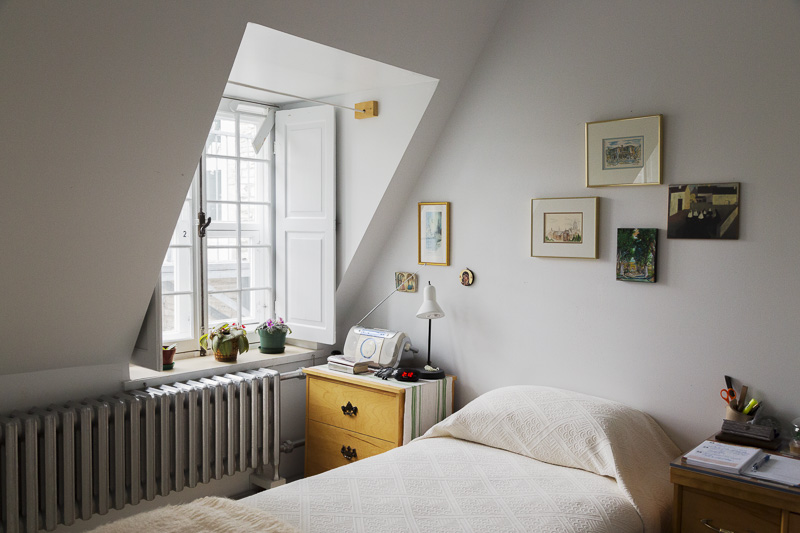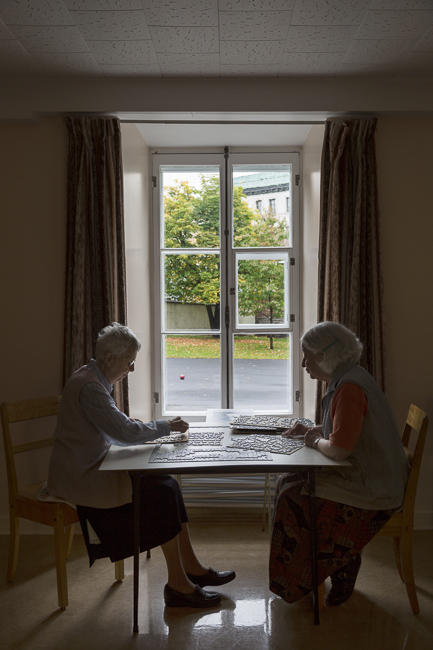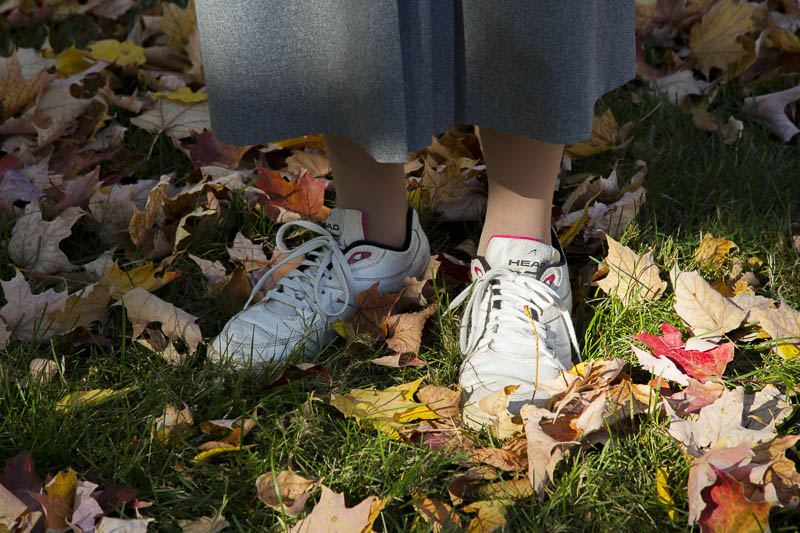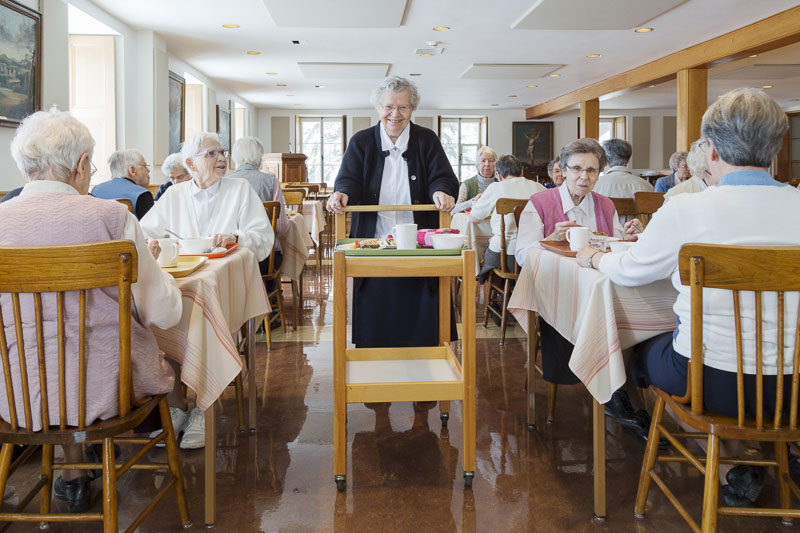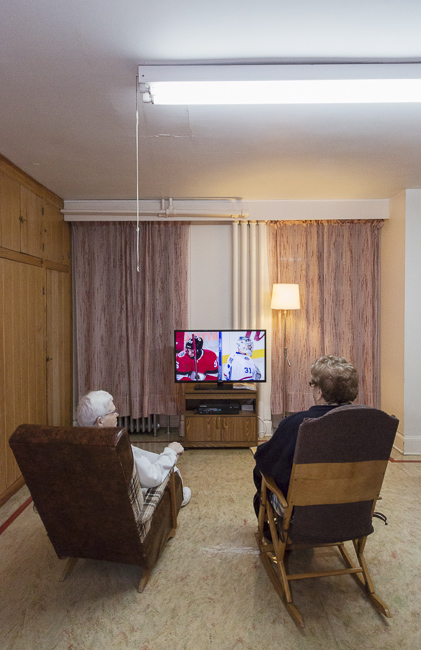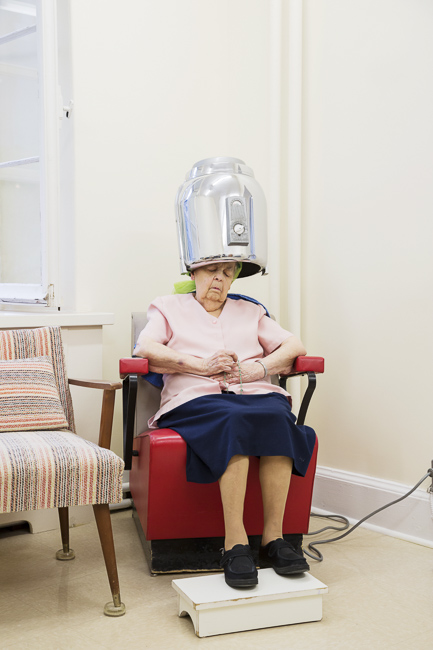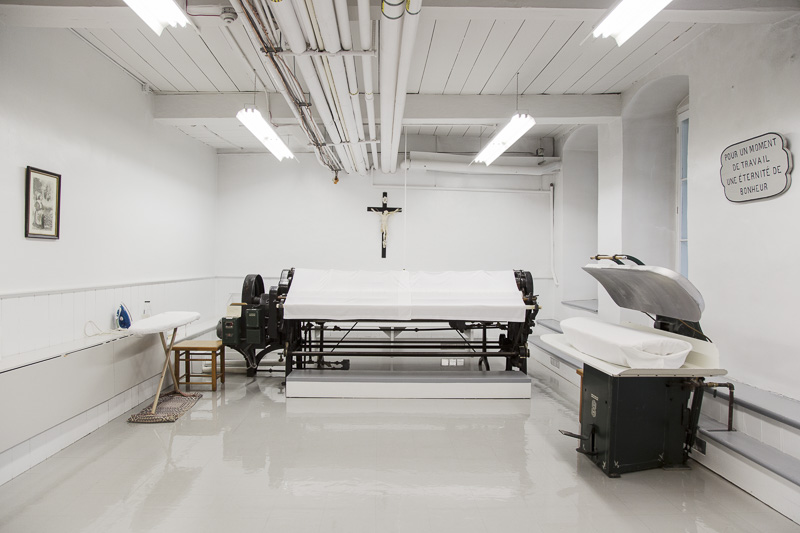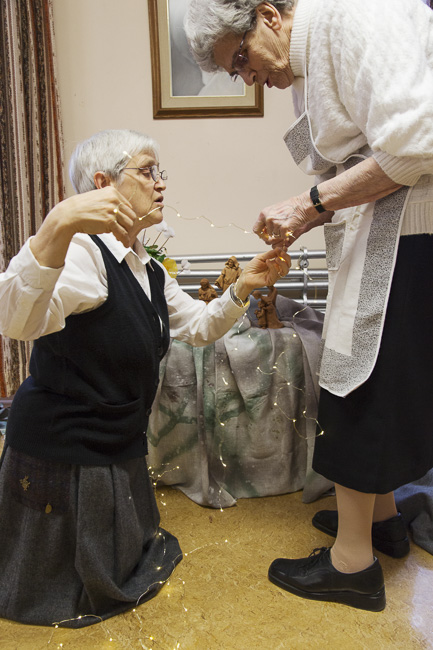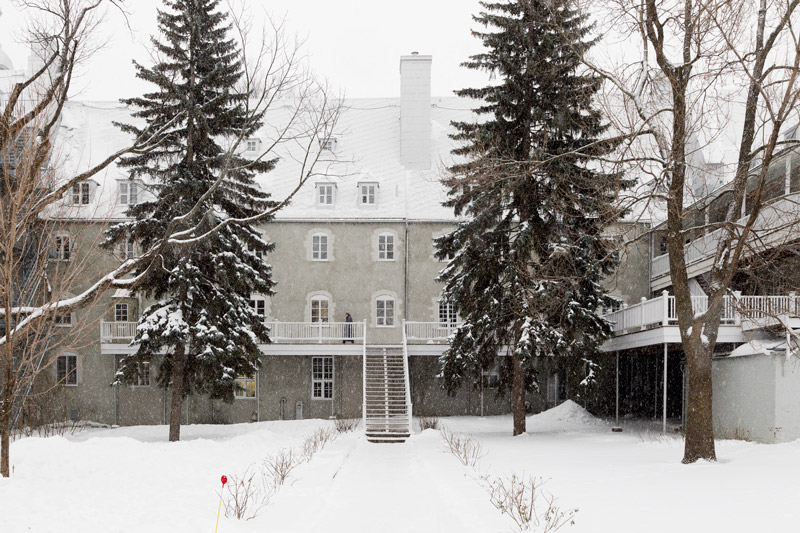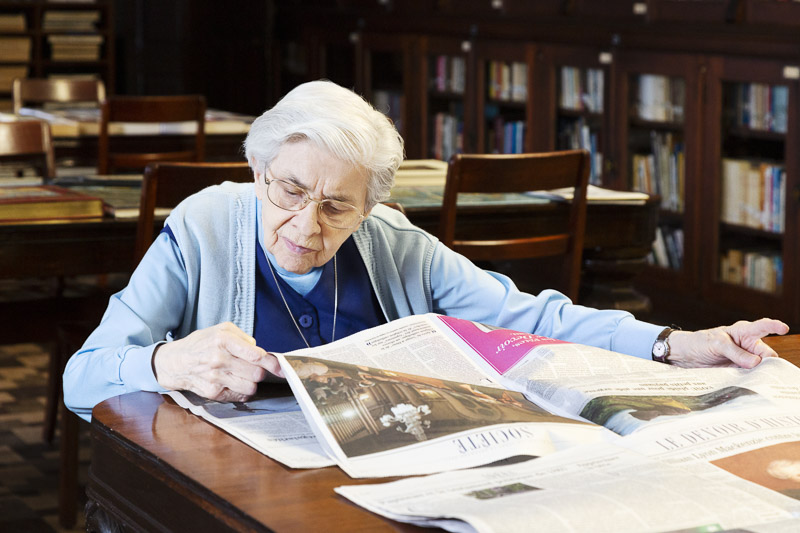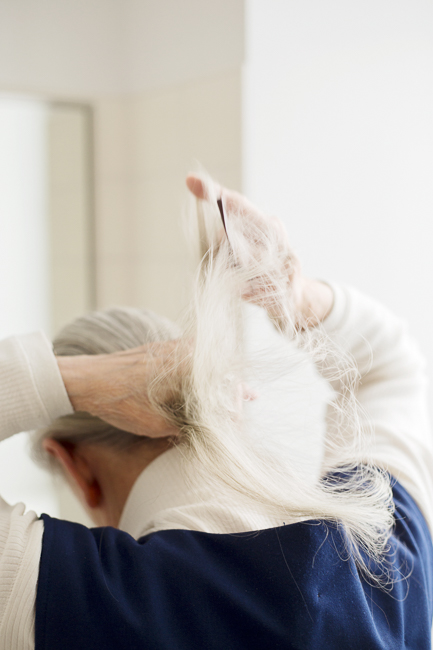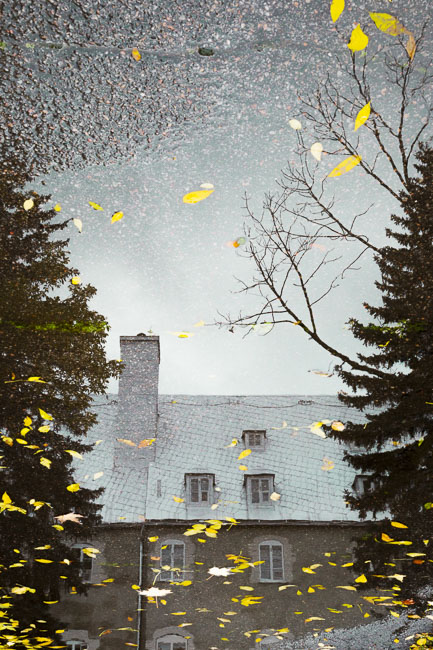[October 27, 2020]
Par Gentiane La France
Photographer Geneviève Thibault is developing an ethnology-oriented documentary approach that takes her into the daily life of others. Focusing on domestic objects, which she highlights with a soft, diffuse flash, she uncovers the organized disorder in the privacy of the abodes that she visits. Thibault immerses herself in the living environments of existing communities, such as the Roma and the Ursuline nuns, as well as those of invented communities, such as those living at the number 148 on streets in the Bas-Saint-Laurent region. She is interested in the human beings with whom she weaves ties, and in the disorientation that this encounter brings her. She observes herself observing the Other even as she takes cares of the subject photographed – notably with the respectful frontality, typical of documentary photography, that recurs in her pictures.
In recent years, Thibault worked on her encounter with the community of Ursuline sisters in Quebec City. During numerous stays at the monastery, she delved into their serene world. She visited the common living spaces that have hosted nuns and students since 1642, and that have now been abandoned, as the Ursulines have moved into a retirement home. This documentary project, presented in two exhibitions – first at the Pôle culturel du Monastère des Ursulines de Québec and then at the Musée régional de Rimouski – is also found in the photobook Blanc, published by Éditions Cayenne.
The cover photograph – two hangers, their shoulders side by side, in an empty closet – conveys the absence left by the departure of the nuns. Within, a first image previews the overall visual narrative of the book, which is constructed as a movement toward winter, with a dormant Virginia creeper lying on a bed of snow and climbing the wall at the edge of the convent property. We start with the end, the Ursulines moving out, because this is the subject. Then, however, the photographs reveal present moments, those of the sisters’ daily activities: meditation, reading, games, manual labour, walks, and prayers fill the first sections of the book. These images of the nuns at work are punctuated with interiors and exteriors, many with symmetrical framings, in which the transition from summer to fall is invoked in the background.
After the first third of the book, anticipation is in the air as the leaves turn red. First, a gesture of greeting to the students in the playground; later, a reading under the portrait of the founder, Saint Marie of the Incarnation; then a calendar that counts down the days before the move, followed by an adjustment to the hands of the clock. At the heart of the book, winter falls, just as preparations for the relocation of the Ursulines outside the monastery, outside of their present moment, begins. In the portraits, the gazes are most often looking away from the camera, toward the past of memories rediscovered or the future of the coming move. Activities anticipate the last Christmas in a space where the nuns have spent their entire lives. The closets and walls are emptied, the boxes are filled and piled up. In this last part of the book, Thibault assembles images of domesticity disappearing from spaces full of history – images of a white winter with no spring coming.
Geneviève Thibault uses an ethnological approach, among others, to the themes of encounters, daily life, and material culture. The fulcrum of her practice is photography, from which she weaves links to sound art. Her projects have been shown in Quebec, Ontario, and Europe. Recipient of the Prix international des Nouvelles Écritures in 2019, she teaches photography at CÉGEP de Matane. genevievethibault.com
As a curator, Gentiane La France has organized the exhibitions Entre trace et aura at VU and Les entretemps at Espaces F. She has taught art history and photography at the college level. She co-hosts “L’Aérospatial,” a radio magazine on the visual arts, on CKRL 89.1 in Quebec City. La France holds a master’s degree in art studies from UQAM and has also studied photography.

